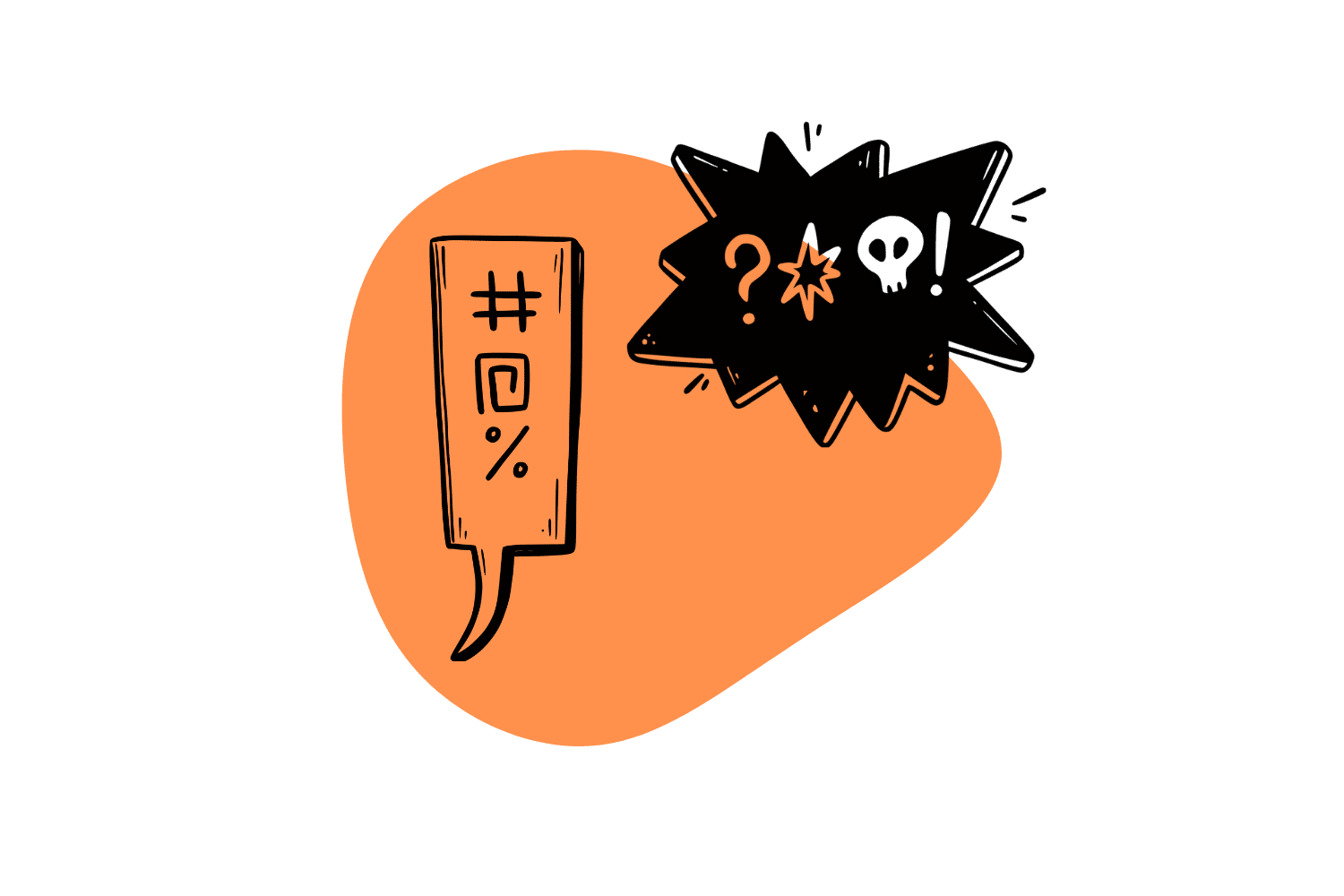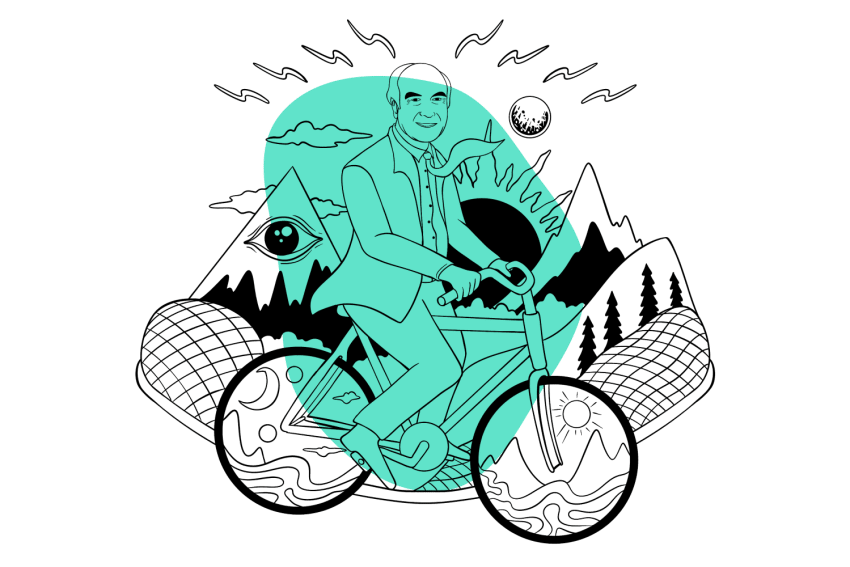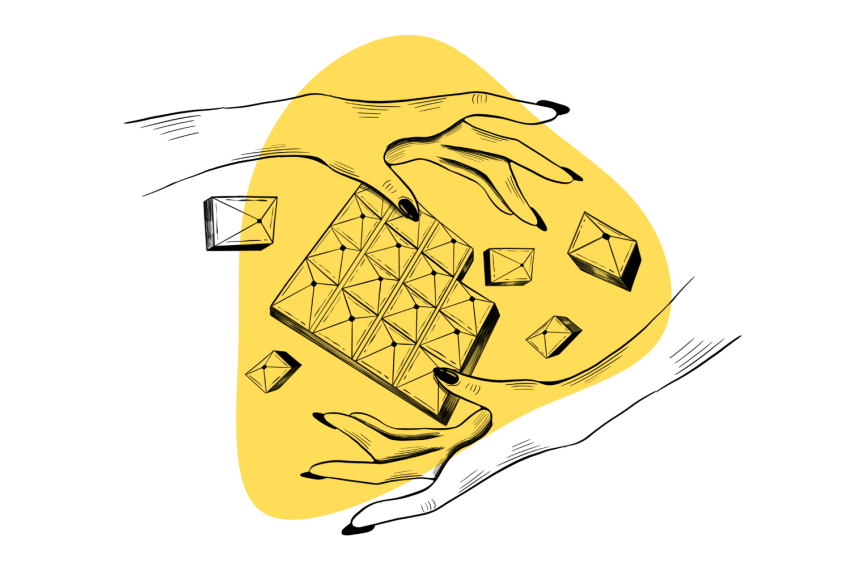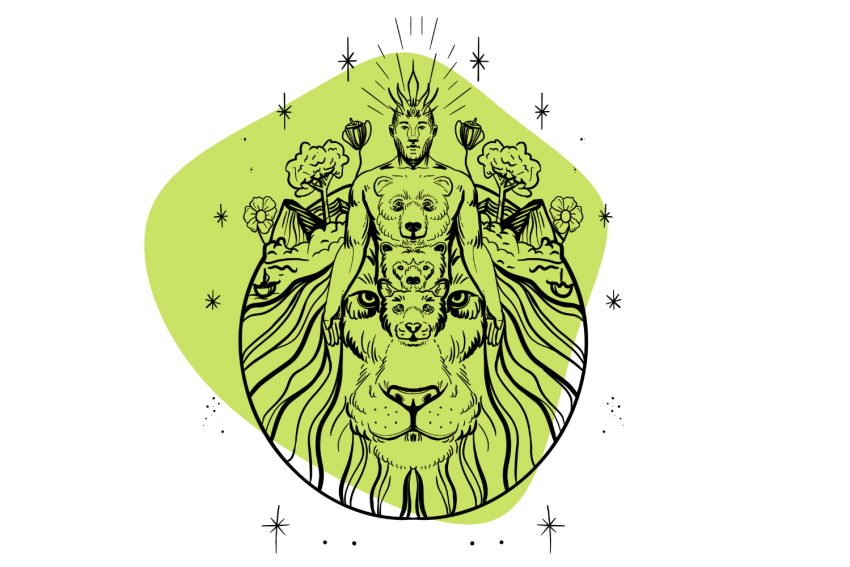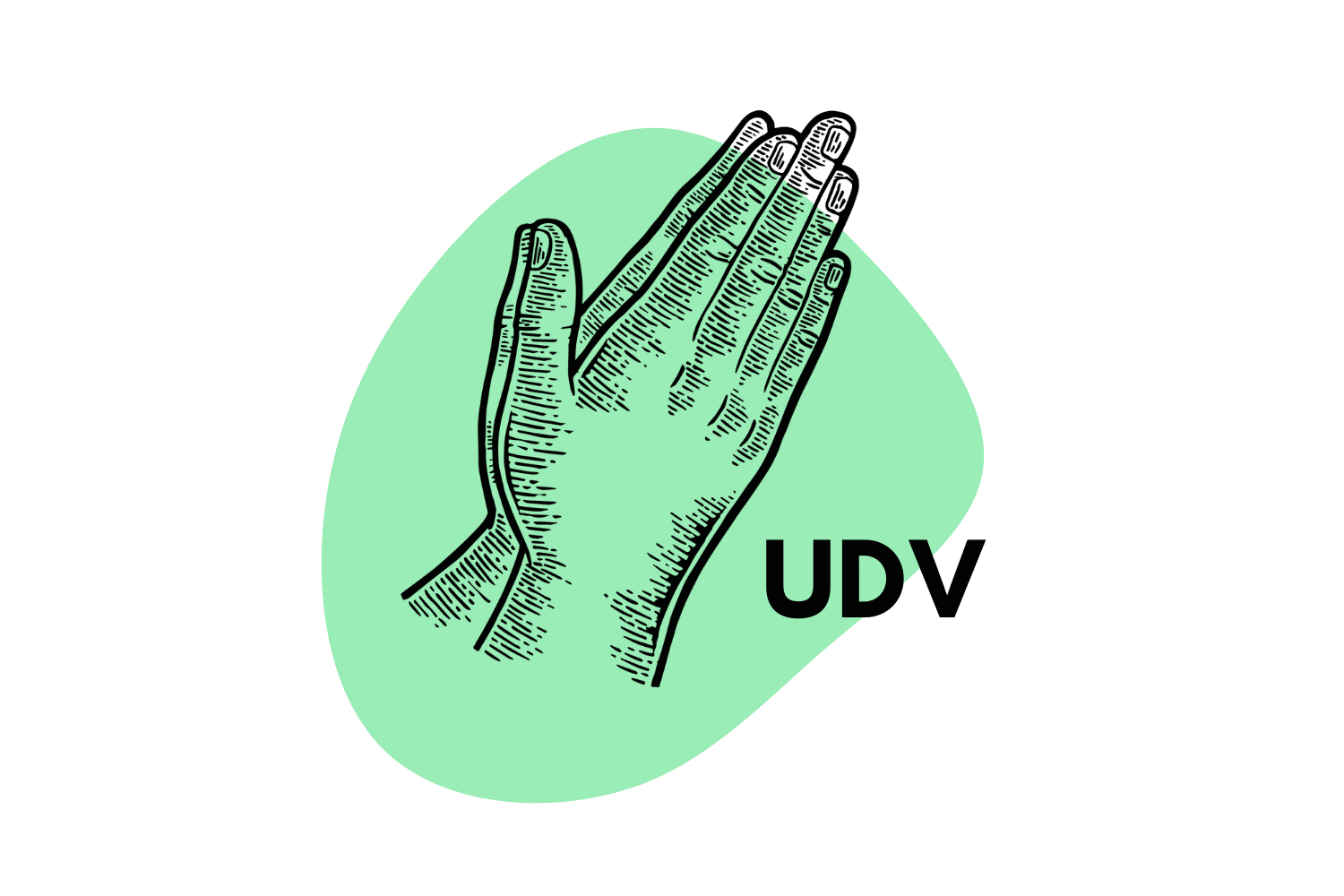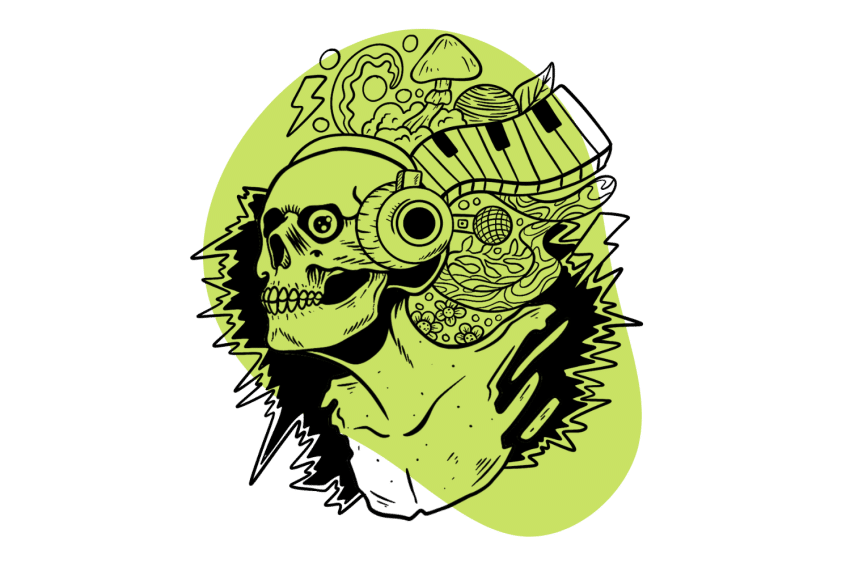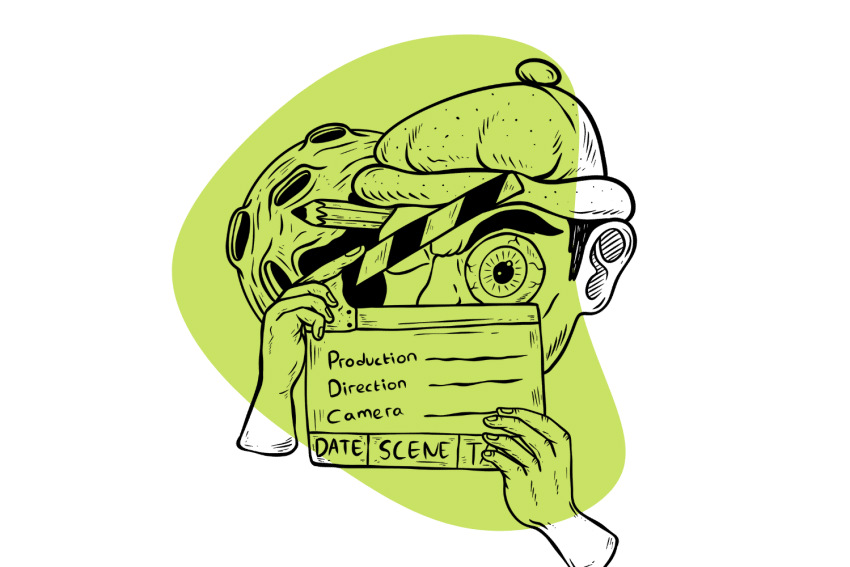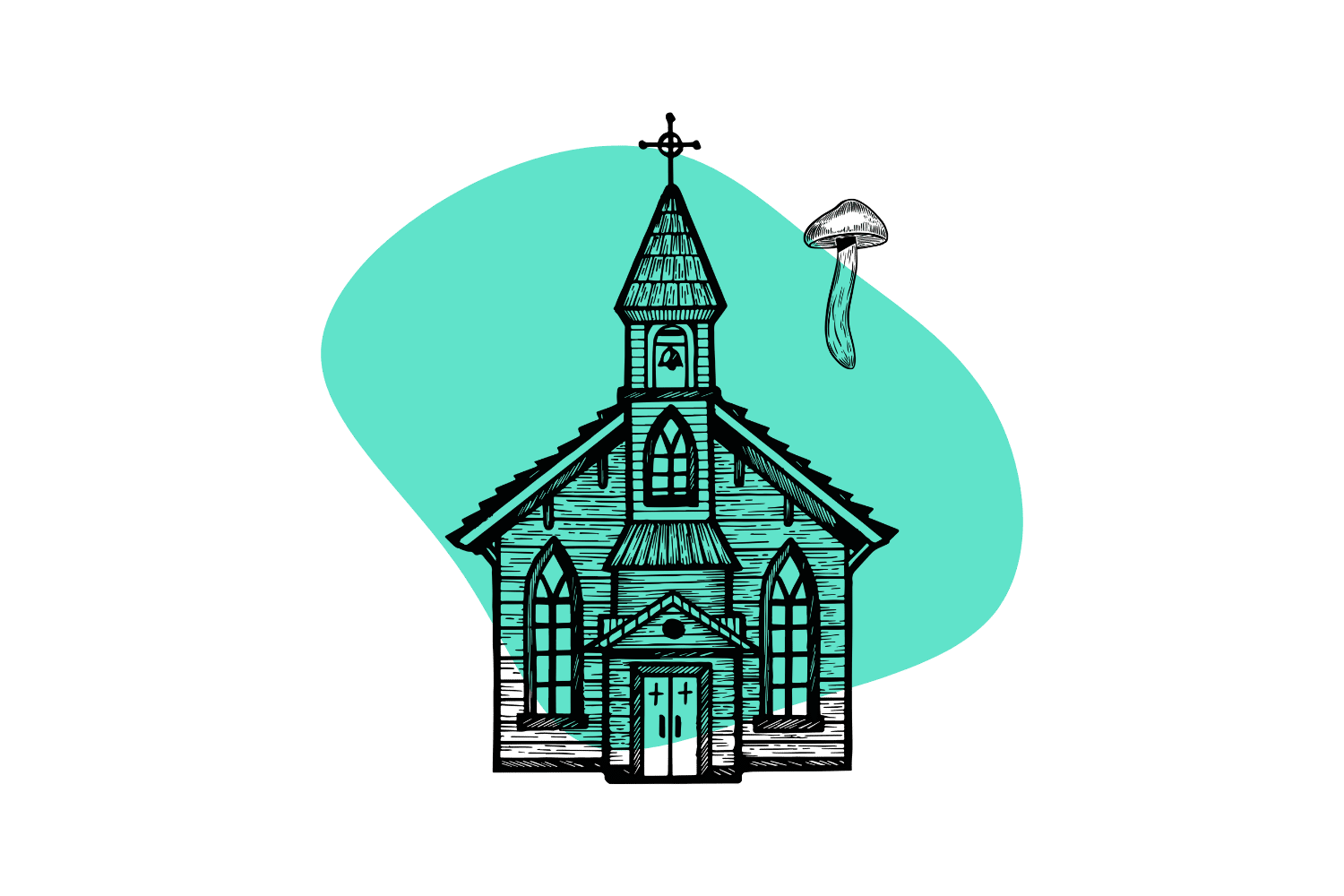The Mind’s Theatre: Psychedelics & Dreams
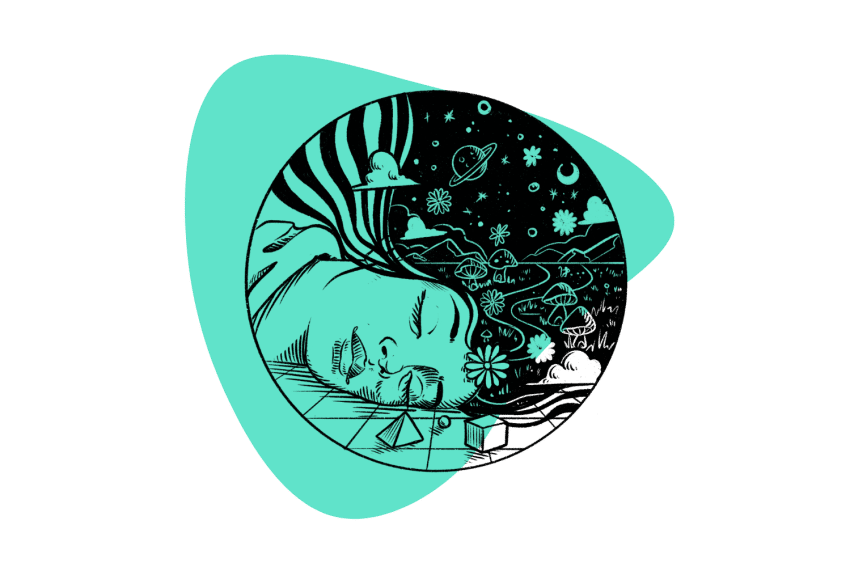
Dr. Carl Jung thought exploring the subconscious mind was key to understanding and improving the human condition. He believed studying hidden emotions and desires could reveal deeply held psychological truths that we may have otherwise been oblivious to.
Through dreams, we can access information that, although often cryptic and surreal, can unlock more profound insights into our lives and how we see ourselves.
If we’re brave enough to journey into these unknown inner realms, we may uncover hidden facets of ourselves waiting to be explored.
Psychedelics, Dreams, & Altered Consciousness
One way to get to these hidden depths is through psychedelic substances — such as psilocybin-containing mushrooms and ayahuasca — that induce altered states of consciousness.
Such drugs have been used around the world for spiritual and therapeutic purposes, offering an experiential journey into the subconscious mind without having to decipher dream symbolism.
Artist and author Alex Gray compared these altered states of consciousness to “a theatre within our closed-eyed heads” where we can play out scenarios vividly within the mind.
Venturing into the inner depths of our psyches can often lead us to places we never expected — ranging from the deepest depths of darkness to soaring heights of ecstasy, simultaneously making them both wildly terrifying and immensely great.
Unlocking the Subconscious Through Psychedelic Experiences
Because dreams are often so difficult to recall, many people turn to psychedelic drugs to tap into their subconscious.
Psychedelic states from ayahuasca, MDMA, mescaline, magic mushrooms and LSD (acid) can offer experiences unlike any other. It has been said that these altered states of consciousness are closest to lucid dreaming.
Psychedelic states use similar pathways toward inner exploration. They have been reported to help people reach intense levels of creativity and self-awareness, which may have long-term beneficial effects on mental health.
In a psychedelic state, you remain aware of the changes in your perspective, can take mental notes, and apply what you have learned after the experience has ended.
Several studies have found that certain psychedelic drugs increase self-reported creativity, well-being, and open-mindedness while reducing anxiety and depression [4].
Furthermore, emerging evidence from neuroimaging studies suggests that psychedelics may exert their therapeutic effects by modulating activity in key brain regions associated with dreaming, including the default mode network (DMN) [5].
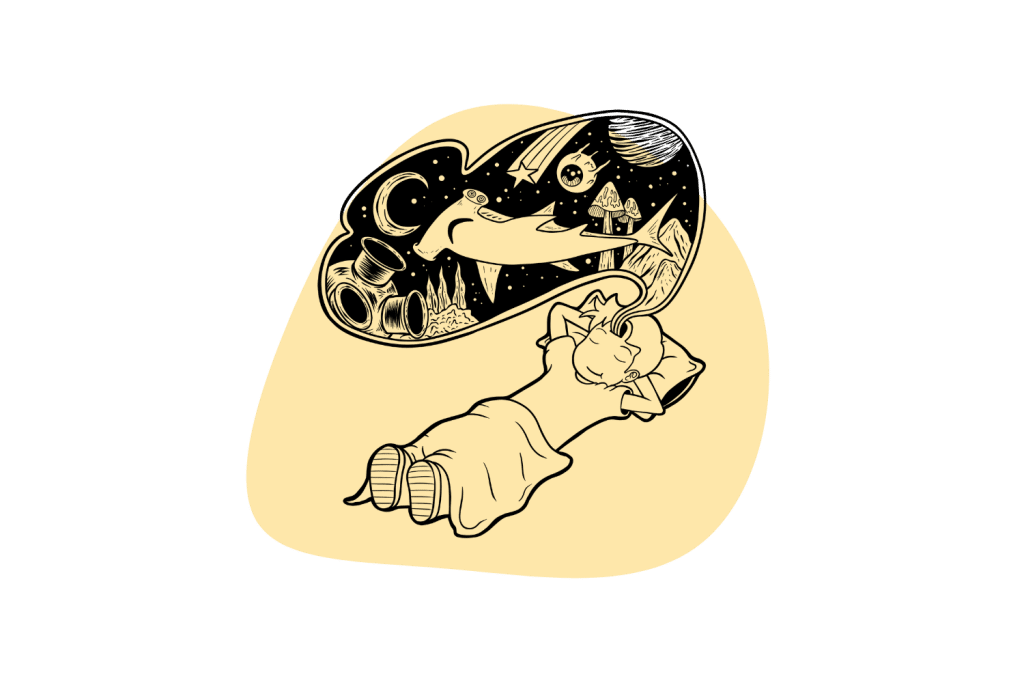
The default mode network (DMN) is an area of the brain that helps in various cognitive functions, including memory, problem-solving and creative thinking.
It consists of interconnected models within the prefrontal cortex, allowing it to communicate with other systems in the brain. This network is especially active when we don’t focus on anything, such as daydreaming or being lost in thought.
The DMN also seems connected to our sense of self (ego) and autobiographical memories.
Psychedelic therapy is based on the idea that these psychoactive substances have similar properties to dreams in that they’re a key to unlocking the subconscious mind.
Despite the potential power of psychedelic drugs, it is crucial to take caution when using these substances — any form of drug use comes with heavy implications, psychological or otherwise.
Bad Trips & Nightmares
Bad trips are the ultimate negative experience one can have on psychedelics — they create extreme anxiety, hallucinations, and confusion.
During a bad trip, the thalamus, frontal limbic structures, and other brain regions are very active, causing your sense of self to dissolve (ego-death).
Bad trips and nightmares differ in considerable ways. Bad trips happen when you’re conscious, whereas nightmares occur in unconscious states.
Even though a bad trip is unpleasant and can seem terrifying, it’s still possible to retain some kind of observational intelligence or lucidity — this allows your brain to process what’s happening inside the mind for further exploration.
However, nightmares occur in a dream state we have no control over and are thought to reflect our innermost anxieties and unresolved conflicts. Nightmares can arise as a response to stress, as well as from medications or conditions such as anxiety and depression.
Experts say that sometimes we need these wild, scary dreams to process feelings more deeply than our conscious minds tend to allow.
Understanding the potential causes of nightmares and learning healthy ways to cope with them makes it possible to reduce their intensity and frequency so that sleep can again feel like a sanctuary rather than a battlefield.
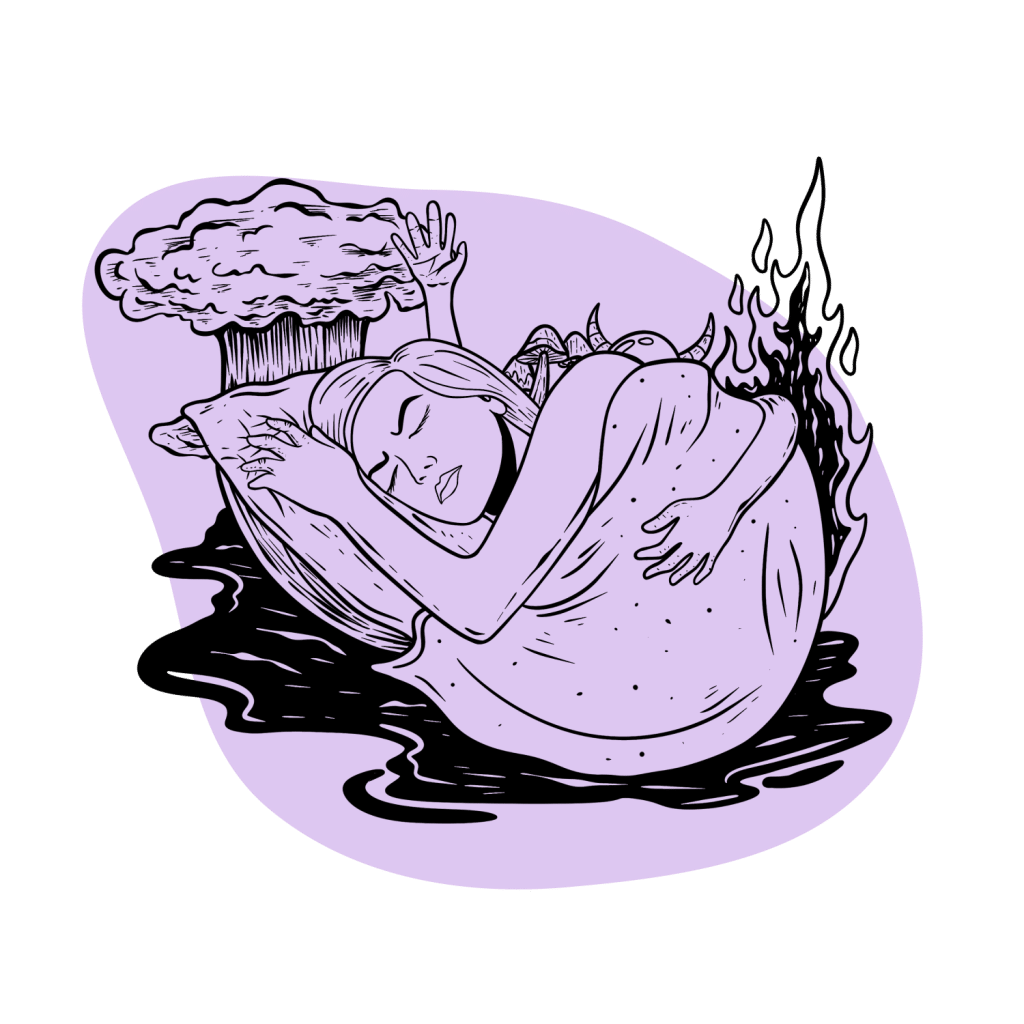
Why Do We Dream?
Have you ever had a vivid dream that you could recall the details of days or even weeks after? Or perhaps you’ve experienced a traumatic nightmare that left you feeling fear and confusion long after waking up.
The scientific community has found that dreams are a natural part of our brain’s functioning and is essential for enhancing memory consolidation and providing mental stimulation to process new information effectively [1].
A lack of quality sleep due to insufficient dreaming can lead to cognitive lapses like reduced problem-solving skills, impaired judgment, and difficulty concentrating [2].
As random and illogical as most dreams seem, dreams don’t come from just anywhere — they come from deep within the subconscious.
One school of thought suggests that dreams serve a functional purpose, helping us process emotions and memories and a way for us to practice skills and work through problems.
According to Dr. Carl Jung, dreams are a way for the subconscious mind to communicate with the conscious mind.
Jung believed that our subconscious holds onto repressed thoughts, feelings, and memories that can manifest symbolically in our dreams (he called it the shadow). By understanding these symbols and their meanings, we can gain insight into our subconscious and ultimately better understand ourselves.
While we may not remember much of our dreams soon after they happen, certain ones can profoundly affect us.
Scientists believe this is because, even though we forget them so quickly, these vivid dreams carry intense emotions that stick with us in ways forgotten dreams don’t.
Of course, the origin of dreaming remains largely a mystery, but its impact on our waking lives is undeniable.
What Happens In the Brain During Sleep?
As paradoxical as it may seem, our brains are much more active while we’re dreaming than when we’re awake or conscious. We know this because scientists can observe electrical brain activity through electroencephalography (EEG).
When awake, our brains are constantly bombarded with stimuli from the outside world, and it needs to filter out information to focus on what’s important. This whole process uses a lot of energy.
By contrast, when we’re asleep, our body can relax and focus on other tasks, such as organizing memories and consolidating information from the day. As a result, sleep plays an essential role in our cognitive development.
The brain enters two sleep modes: rapid eye movement (REM) and slow-wave (or non-REM).
During slow-wave sleep, the brain produces lower-frequency delta waves, and some researchers believe it plays a critical role in human cerebral restoration and recovery [3].
On the other hand, during REM sleep, activity throughout the brain becomes more active compared to a waking state. The REM sleep cycle is where dreaming occurs.
During this phase, our brains experience heightened activity in the regions responsible for visual imagery, memory, emotions, and physical movements. Brain scans have also shown increased activity in the frontal cortex, which is responsible for higher-level thinking and problem-solving.
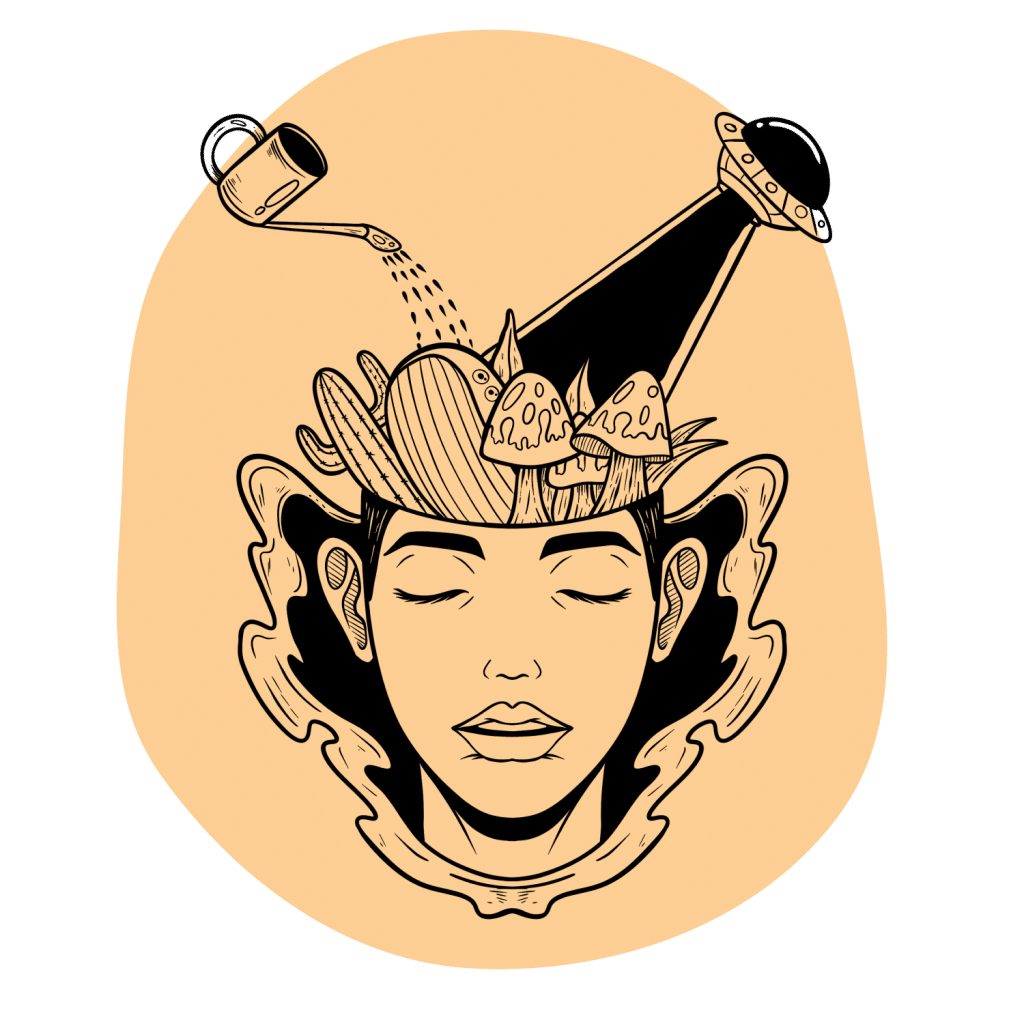
What Is A Lucid Dream?
We all have dreams while we sleep, but did you know there’s a particular type called a “lucid dream?”
Lucid dreaming is when you become aware that you’re in a dream and take control of your actions and environment. It may sound pretty far-fetched, but this phenomenon has been studied extensively and requires practice.
While regular dreams often feature random images and ideas without direct association with reality, lucid dreams pose an opportunity for self-exploration due to their controllable nature.
In most cases, it’s impossible to remember every detail from dreams because our minds usually don’t store them. However, lucid dreaming offers more vivid memories of what happened in the dreamscape since the experience feels much more real.
When someone is lucid dreaming, it’s like being caught between two worlds — conscious awareness enters into the subconscious dream space, allowing them to take greater control over their dreams and consciously shape them.
This control can range from simply taking charge of stories threading through a narrative or fully exploring what it would be like in different planes of existence.
Exploring the world of lucid dreaming can allow you to work through issues, reset your thoughts and expectations, have positive experiences, trigger creativity, and innovate problem-solving ideas.
Related: Lucid Dreaming — 15 Tips & Tricks to Get Started
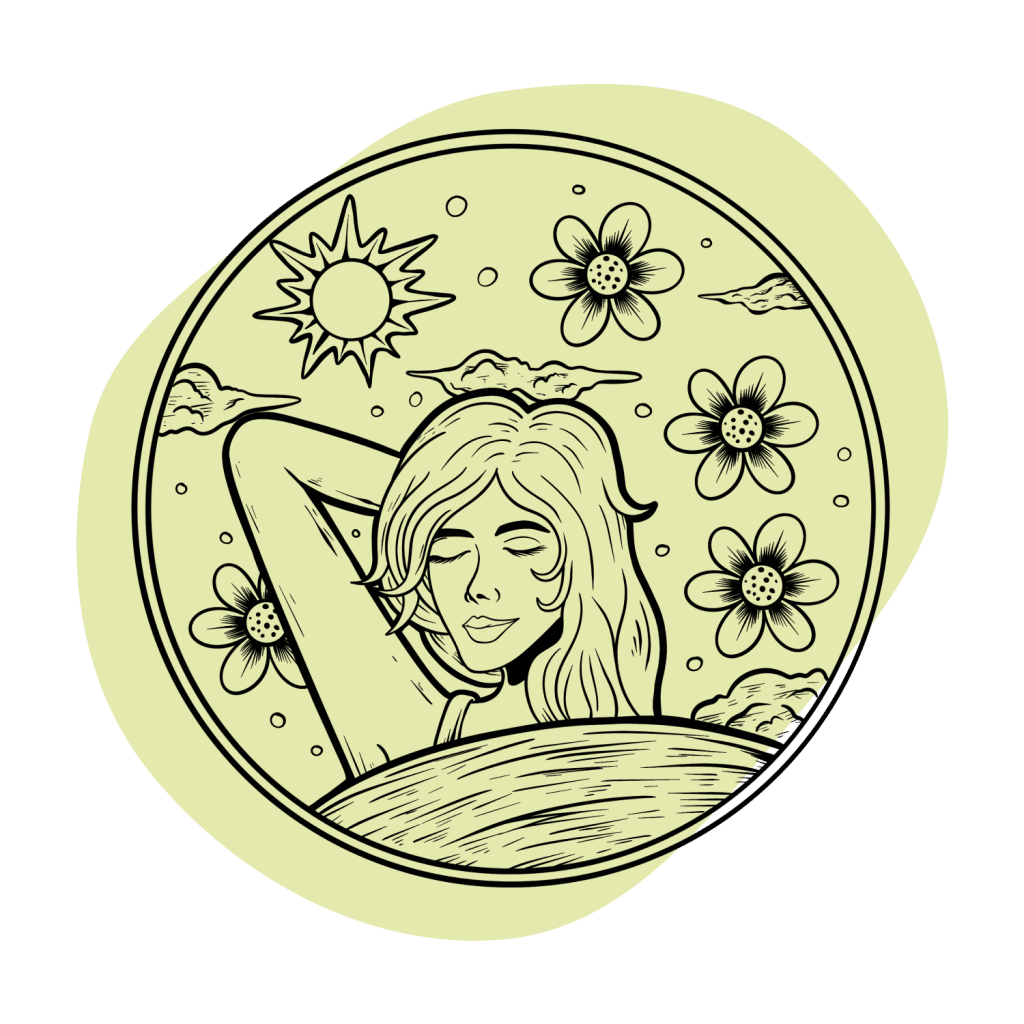
How To Have More Vivid Dreams
Natural dream states tap into some of the same chemicals produced during altered states of consciousness, like from a psychoactive substance.
This is why dreaming can sometimes have surrealistic effects and feelings, like being locked in an alternate reality — one might say that vivid dreams are like free-drug trips.
While many people can randomly experience lucid dreams, you can take steps to increase the frequency of these powerful dreams.
1. Take Oneirogens (A Subclass of Psychedelics)
Oneirogens are substances (natural and synthetic) that can induce trance-like states of consciousness. For centuries, dream herbs have been used by shamans and healers in different cultures to unlock visions or messages that may appear within dreams.
Many natural herbs and fungi can affect one’s dream state. Common types of oneirogens include dietary supplements such as herbs like African dream root, mugwort, morning glory seeds, and yerba maté.
These substances have mild to moderate effects on your mood and energy levels while awake but produce profound effects while asleep.
You can also find chemical oneirogens like racetams, a synthetic nootropic compound, and amphetamines such as Adderall and MDMA, which some people take to enter a more vivid dream state.
As for safety, there is little long-term evidence to prove that these oneirogens are definitively safe, so caution should be exercised when taking them.
2. Keep A Dream Journal
Keeping a dream journal is an effective way to improve your dream recall and have more vivid dreams.
Whether you use a notebook or one of the many apps available, jotting down your dreams as soon as you wake up can help you remember more details about them.
Since memories fade quickly after waking, dream journals provide a way to capture your experience before they’re lost forever.
If you’ve struggled to remember your dreams, keeping a dream journal may be worthwhile. You’ll be pleasantly surprised with what happens when you stop and decompose your dreams into tangible ideas.
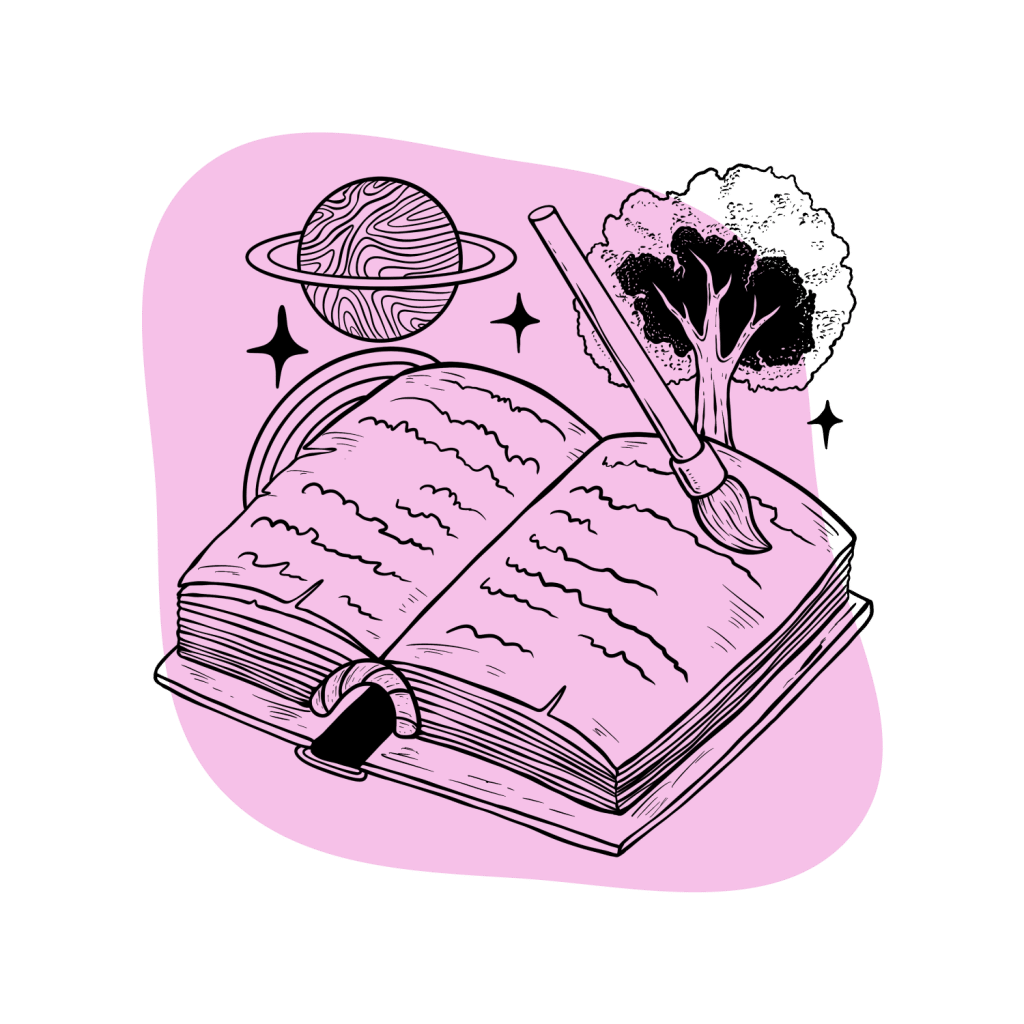
3. Create An Environment for Deep Sleep
It’s possible that the environment in your bedroom could boost the intensity of your dreams and lead to lucid dreaming. How you design and optimize your room can make all the difference in how well you sleep — and how vivid or surreal your dreams are.
The body must be completely relaxed to enter the REM sleep phase (where dreaming occurs). If the body is disturbed by external sensations, such as environmental noise or other stimuli, your subconscious will be affected.
Before bed, try spaying essential oils like lavender, geranium, or sandalwood onto your pillow or tissue nearby to promote sleep and relaxation.
Place a few plants around the room for fresh air and to create a calming sanctuary. Relaxing music and soft lighting can help induce sleep and increase the chances of having detailed, memorable dreams.
Finally, free up as much space as possible for an uncluttered environment to inspire deep, restorative sleep for dreaming.
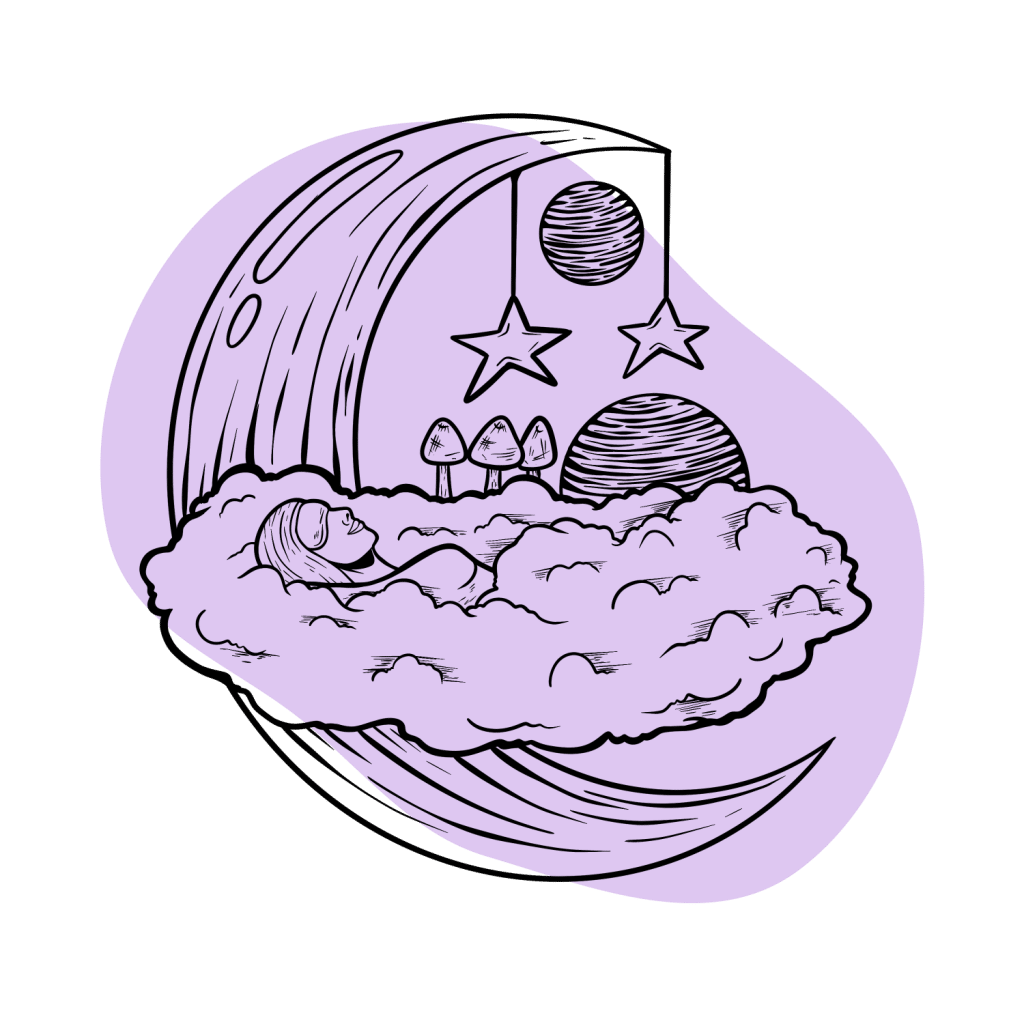
Final Thoughts: Psychedelics & Dreams
Carl Jung believed that understanding the subconscious was essential for achieving psychological balance and fulfilled life.
Dreams are one of life’s mysterious phenomena.
While scientists have proposed various theories, some believe dreams could be our unconscious mind’s way of speaking to our conscious state. This communication could provide insight, warn us about possible risks, or show us opportunities that may inspire us on our life path.
Lucid dreaming is the ability to control your dreams and use them as a tool to access your subconscious. Much like lucid dreams, psychedelic experiences involve mental imagery, changes in emotion, and mental activation — making them comparable in many ways.
Depending on the substance, it may include intense auditory and visual hallucinations — akin to dream-like states — and complex thought patterns that allow for divergent thinking and creative breakthroughs.
Many people believe that psychedelic substances can help unlock the hidden messages and meanings behind our dreams. While the scientific evidence is still inconclusive, there’s no doubt that there’s a strong connection between the two.
References
- Diekelmann, S., & Born, J. (2010). The memory function of sleep. Nature Reviews Neuroscience, 11(2), 114-126.
- Killgore, W. D. (2010). Effects of sleep deprivation on cognition. Progress in brain research, 185, 105-129.
- Roth, T. (2009). Slow wave sleep: does it matter?. Journal of Clinical Sleep Medicine, 5(2 suppl), S4-S5.
- Anderson, T., Petranker, R., Rosenbaum, D., Weissman, C. R., Dinh-Williams, L. A., Hui, K., … & Farb, N. A. (2019). Microdosing psychedelics: personality, mental health, and creativity differences in microdosers. Psychopharmacology, 236(2), 731-740.
- Smigielski, L., Scheidegger, M., Kometer, M., & Vollenweider, F. X. (2019). Psilocybin-assisted mindfulness training modulates self-consciousness and brain default mode network connectivity with lasting effects. NeuroImage, 196, 207-215.


